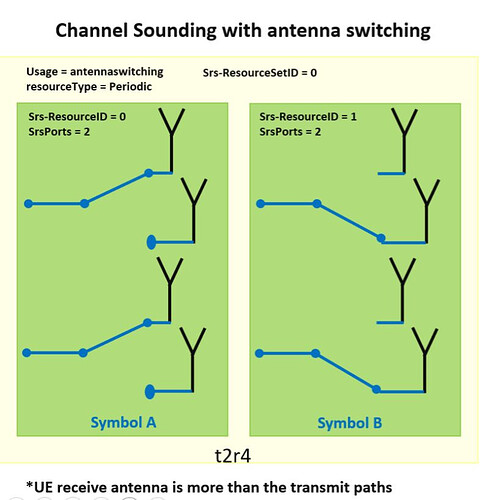-
Antenna switching simply means if the number of TX Branches is less than the RX Branches within the UE.
-
The UE will use the RX branches as a TX to send the SRS. Assuming we have 1T2R. This means 2 SRS sets will be transmitted using 1 Tx to switch the signal and send it twice through the two UE RX.
-
If UE TX = UE RX → SRS Transmit from each RX Ant, then BTS deduces DL Propagation towards each antenna
-
If UE TX < UE RX → UE must support antenna switching
-
As shown in the below figure, the UE switched the SRS 2 TX to transmit SRS through it is own 4 RX; Symbol A UE Transmitted 2 SRS, then at Symbol B UE switched the same 2 TX to the remaining 2 RX.
-
A BTS can use the SRS in combination with the channel reciprocity to deduce the DL Propagation channel. The DL propagation channel towards each UE receive antenna can be deduced if the UE can transmit the SRS from each receive antenna, and this requires the UE to support SRS Antenna switching.
-
If the UE Capability lacks the below, this means antenna switching is not supported, and accordingly, this particular UE can`t benefit from the channel reciprocity to deduce DL CL Propagation through SRS
-
To verify UE Capability from Logs, You need to look into “SupportedSRS- TXPortSwitch: TxRx” in UE Capability message in L3 Signaling.
Data Source: 5G NR in Bullets Book
LinkedIn: ![]()
